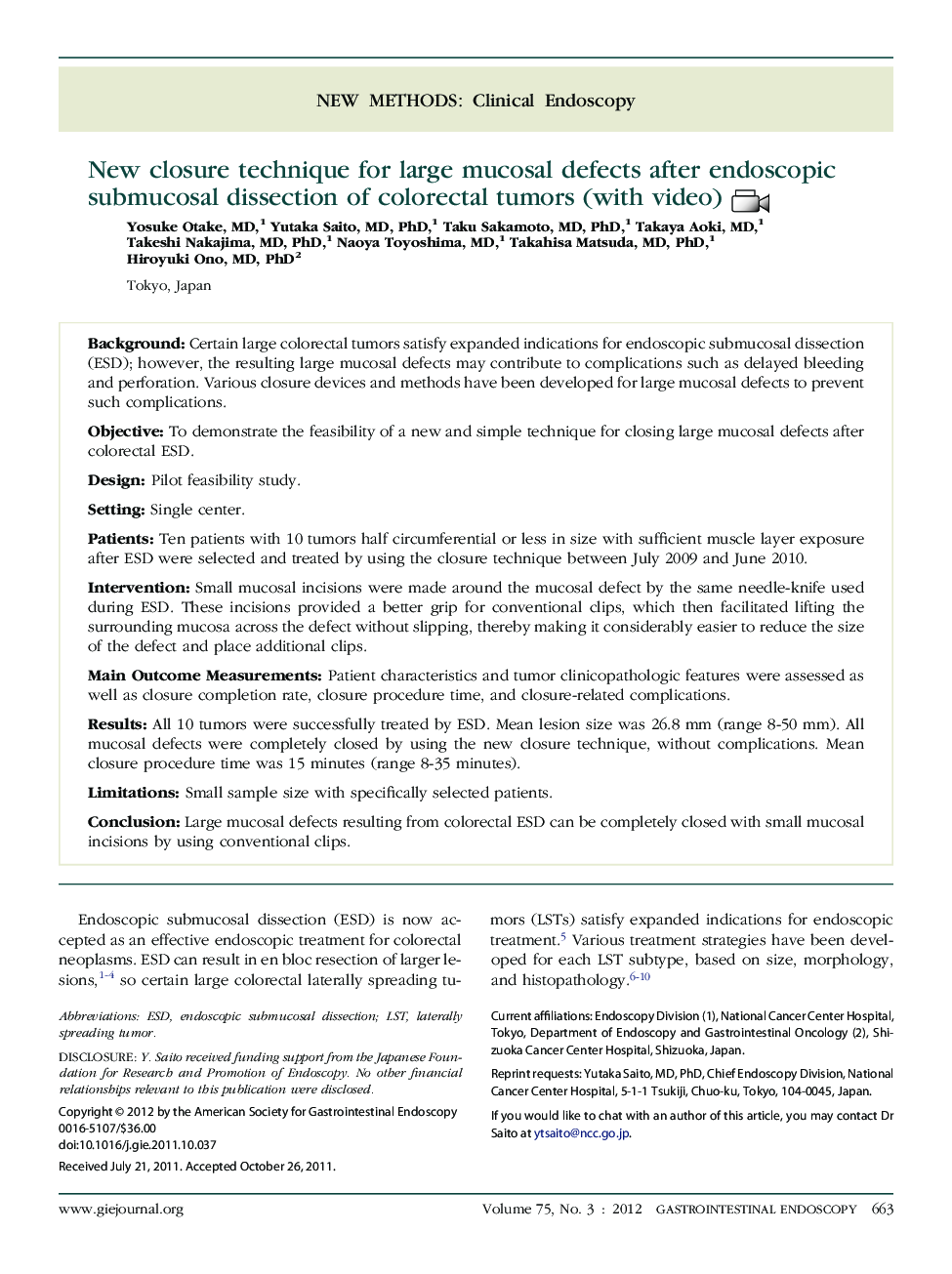| Article ID | Journal | Published Year | Pages | File Type |
|---|---|---|---|---|
| 3304339 | Gastrointestinal Endoscopy | 2012 | 5 Pages |
BackgroundCertain large colorectal tumors satisfy expanded indications for endoscopic submucosal dissection (ESD); however, the resulting large mucosal defects may contribute to complications such as delayed bleeding and perforation. Various closure devices and methods have been developed for large mucosal defects to prevent such complications.ObjectiveTo demonstrate the feasibility of a new and simple technique for closing large mucosal defects after colorectal ESD.DesignPilot feasibility study.SettingSingle center.PatientsTen patients with 10 tumors half circumferential or less in size with sufficient muscle layer exposure after ESD were selected and treated by using the closure technique between July 2009 and June 2010.InterventionSmall mucosal incisions were made around the mucosal defect by the same needle-knife used during ESD. These incisions provided a better grip for conventional clips, which then facilitated lifting the surrounding mucosa across the defect without slipping, thereby making it considerably easier to reduce the size of the defect and place additional clips.Main Outcome MeasurementsPatient characteristics and tumor clinicopathologic features were assessed as well as closure completion rate, closure procedure time, and closure-related complications.ResultsAll 10 tumors were successfully treated by ESD. Mean lesion size was 26.8 mm (range 8-50 mm). All mucosal defects were completely closed by using the new closure technique, without complications. Mean closure procedure time was 15 minutes (range 8-35 minutes).LimitationsSmall sample size with specifically selected patients.ConclusionLarge mucosal defects resulting from colorectal ESD can be completely closed with small mucosal incisions by using conventional clips.
